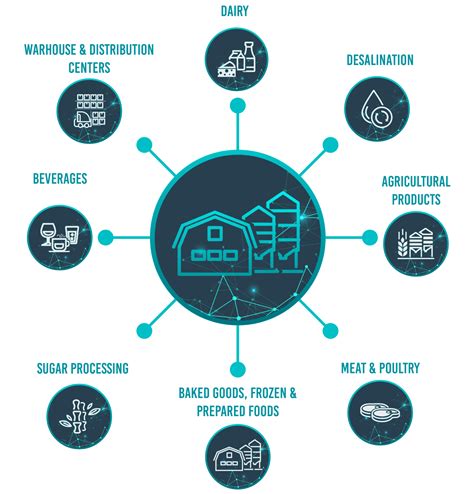A Complete Overview of the Food and Beverage Industry
The food and beverage (F&B) industry is a vast and dynamic sector encompassing the production, processing, distribution, and sale of food and beverages. It's a crucial part of the global economy, impacting everything from agriculture to retail, and employing millions worldwide. This overview will explore the key aspects of this multifaceted industry.
Key Segments of the F&B Industry
The F&B industry is segmented into several key areas, each with its own unique characteristics and challenges:
-
Food Production: This segment includes farming, fishing, livestock rearing, and aquaculture. It's the foundational level, providing the raw materials for further processing. Sustainability and ethical sourcing are increasingly important concerns within this area.
-
Food Processing: This involves transforming raw agricultural products into consumable goods. This can range from simple processes like milling grains to complex procedures like canning or freezing. Food safety and quality control are paramount here.
-
Food and Beverage Manufacturing: This segment focuses on the large-scale production of packaged food and beverages. This often involves sophisticated technologies and significant investments in infrastructure. Brand management and marketing play crucial roles in this segment.
-
Food and Beverage Distribution: This involves getting products from manufacturers to retailers and consumers. Efficient logistics and supply chain management are critical to minimizing waste and ensuring product freshness. Cold chain logistics is especially important for perishable goods.
-
Food Service: This includes restaurants, cafes, catering services, and institutional food providers. This segment is characterized by a high degree of customer interaction and a focus on customer experience.
-
Retail: This segment involves the sale of food and beverages to consumers through supermarkets, convenience stores, and other retail outlets. Merchandising, shelf placement, and promotional strategies are key components of success here.
Key Trends Shaping the F&B Industry
Several significant trends are reshaping the F&B landscape:
-
Health and Wellness: Consumers are increasingly health-conscious, demanding healthier options with lower sugar, fat, and sodium content. This has led to a surge in demand for organic, plant-based, and functional foods.
-
Sustainability: Environmental concerns are driving a shift towards sustainable practices throughout the supply chain. This includes reducing waste, minimizing environmental impact, and promoting ethical sourcing.
-
Technology and Automation: Technology is revolutionizing the F&B industry, from precision agriculture to automated production lines and advanced food safety technologies.
-
E-commerce and Delivery Services: The growth of online grocery shopping and food delivery services has dramatically changed how consumers access food and beverages.
-
Personalization and Customization: Consumers increasingly seek personalized food and beverage experiences, leading to customized products and tailored recommendations.
Challenges and Opportunities
The F&B industry faces several challenges, including:
-
Supply chain disruptions: Global events can significantly impact supply chains, leading to shortages and price increases.
-
Food safety concerns: Maintaining high standards of food safety is crucial to protect consumers and prevent outbreaks of foodborne illness.
-
Competition: The F&B industry is highly competitive, with both established players and new entrants vying for market share.
-
Changing consumer preferences: Keeping up with evolving consumer trends and preferences is essential to remain competitive.
However, the industry also presents significant opportunities, including:
-
Growth in emerging markets: The rising middle class in developing countries presents significant growth potential.
-
Innovation in product development: Developing new and innovative products can capture significant market share.
-
Sustainability initiatives: Companies that prioritize sustainability can attract environmentally conscious consumers.
-
Technological advancements: Embracing technology can improve efficiency and reduce costs.
The food and beverage industry is a dynamic and ever-evolving sector. Understanding its key segments, trends, challenges, and opportunities is critical for success in this essential area of the global economy. The future of the F&B industry promises to be shaped by ongoing innovation, technological advancements, and a growing focus on sustainability and consumer health.
